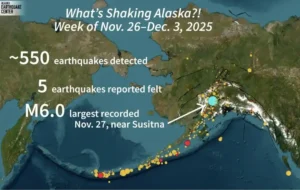Alaska’s prominent elected officials expressed dissatisfaction last month after the Biden administration turned down a state agency’s plan to construct a new road in remote Northwest Alaska, aiming to reach numerous mining sites.
Supporters of the mining industry and their political backers had emphasized the significance of the road and the potential mines it could facilitate as essential economic pillars for the thinly populated area. However, the primary concern for many local leaders lies with an already operational mine: Red Dog, positioned 75 miles to the north of Kotzebue, the regional hub.
The development contributes approximately 5% of the world’s zinc supplies. Last year, nearly 1,000 individuals who owned shares in the local Indigenous-owned corporation, NANA, or were family members of shareholders were employed by the mine’s operator or mining contractors. Their combined earnings amounted to around $63 million.
Historically, the mine has been responsible for more than one-fourth of the local borough’s total wage and salary payroll, with a population of 7,400. Furthermore, payments from Red Dog constitute between 80% and 90% of the borough’s annual revenue.
However, Red Dog’s longevity is limited: Teck Resources, the Canadian firm overseeing operations on land owned by NANA, indicates that the available ore will only support operations until 2031.
Teck has been exploring new deposits approximately 10 miles away from the current site for several years, which could extend production for decades. However, the company asserts that an additional six years of study are necessary to ascertain the viability of these deposits for mining.
Delays in obtaining federal permits to access this area have raised concerns that Northwest Alaska faces ore shortage among local government and business leaders regarding the potential economic repercussions of a production gap.
The ramifications stretch well beyond Northwest Alaska. A provision within the state’s significant Native claims settlement legislation mandates that NANA shares a substantial portion of its Red Dog revenue with other Indigenous-owned corporations dispersed throughout its rural villages.
Many of these corporations use the funds they receive from Red Dog to subsidize community stores and fuel businesses, often the sole establishments in a town.
Nathan Hadley Jr., the President of the Northwest Arctic Borough Assembly, expressed concerns that Northwest Alaska faces an ore shortage, stating, “Once the revenue stream diminishes, numerous opportunities in Alaska will fade. This will significantly impact residents and the entire state.”
To its proponents, Red Dog epitomizes the realization of the Alaska Native Claims Settlement Act (ANCSA) of 1971, a federal law that created 12 regional Indigenous-owned corporations and granted them rights to approximately 10% of the state’s land.
NANA was among the 12 regional corporations established under ANCSA and secured the territory where Red Dog currently operates. This territory had long been identified as promising for mineral extraction.
In 1982, the corporation entered into a groundbreaking mining development agreement with Teck, which has since proven lucrative for both parties.
In return for access to minerals on NANA’s lands, Teck distributes its profits and prioritizes hiring NANA shareholders and their relatives. Additionally, NANA is involved in overseeing the mine as a partner.
Since the commencement of mining operations, NANA has received royalties exceeding $1.2 billion from Red Dog. Furthermore, by the stipulations of the Native Claims Settlement Act, NANA has shared an additional $2 billion with other Indigenous-owned corporations.
In Kivalina, an Iñupiaq village with a population of 420, situated downstream of the mine, residents have long voiced concerns about Red Dog’s presence and the discharge of treated wastewater into the watershed. They have also pursued legal challenges against various aspects of the project.
However, the project garners widespread regional backing: NANA reports 83% of shareholders endorse ongoing mining activities in the Red Dog vicinity.
Teck indicates that approximately seven years’ worth of ore is left at the current site. Consequently, the company has focused on two new deposits as potential additional ore sources. The ore would then be transported back to Teck’s existing processing facilities at the original site.
The company has utilized helicopter-mounted rigs to drill numerous holes in the tundra to assess the potential of two prospects: Aktigiruq and Anarraaq. Despite this, Teck asserts that further underground tunneling is necessary to understand the area’s potential better.
The company requires environmental approvals to construct a 13-mile access road to transport the heavy equipment necessary to the sites. Specifically, they need a Clean Water Act permit from the U.S. Army Corps of Engineers to discharge dredged material into wetlands.
According to a Corps spokesman, John Budnik, Teck initially applied for this permit in 2018. However, the application was withdrawn a year later because the Corps required more information to complete cultural studies.











